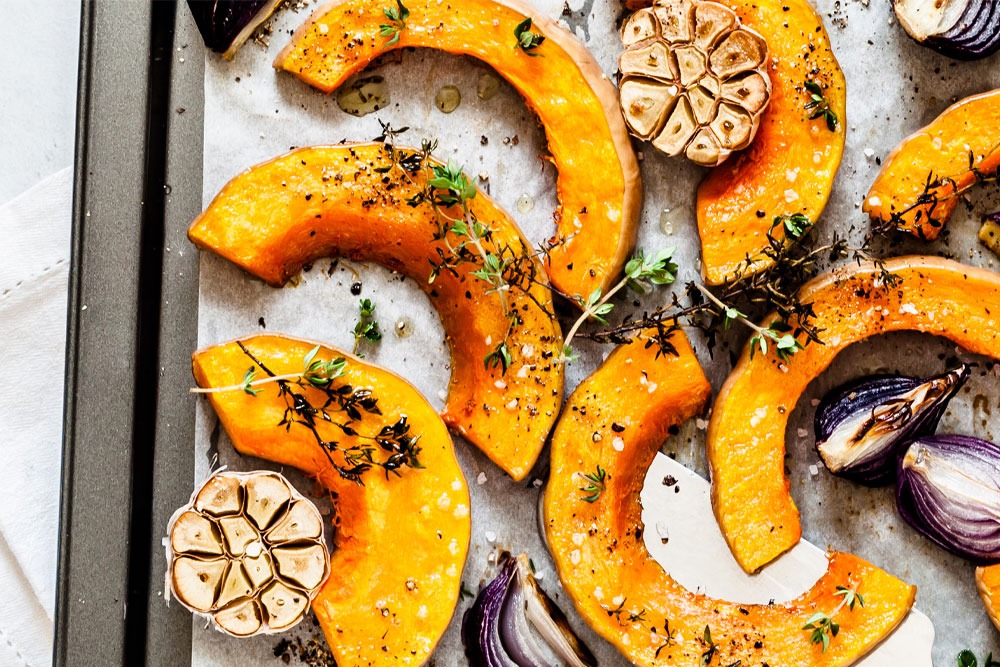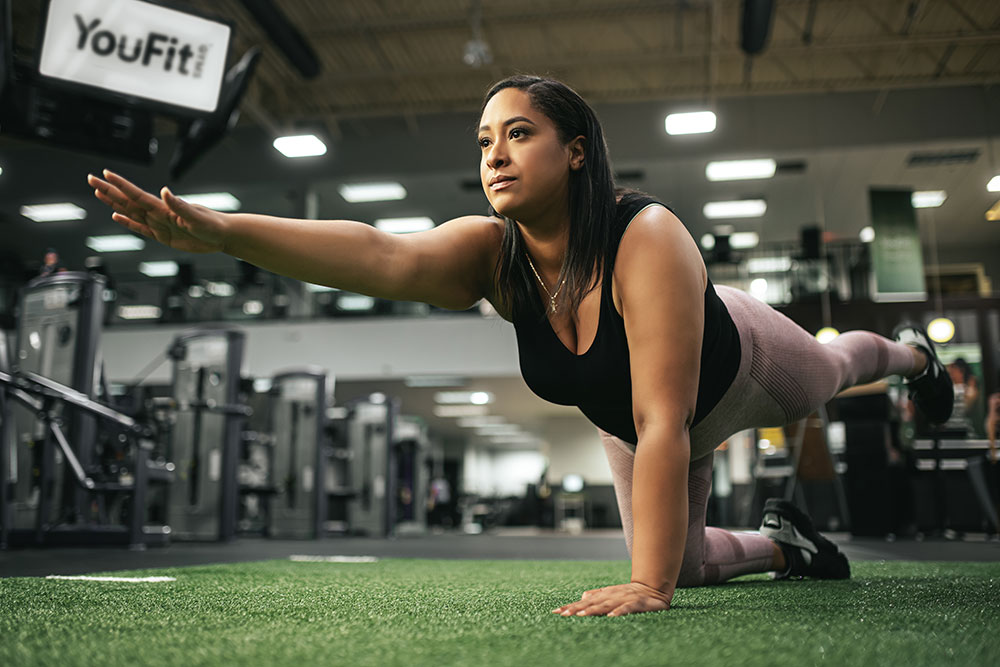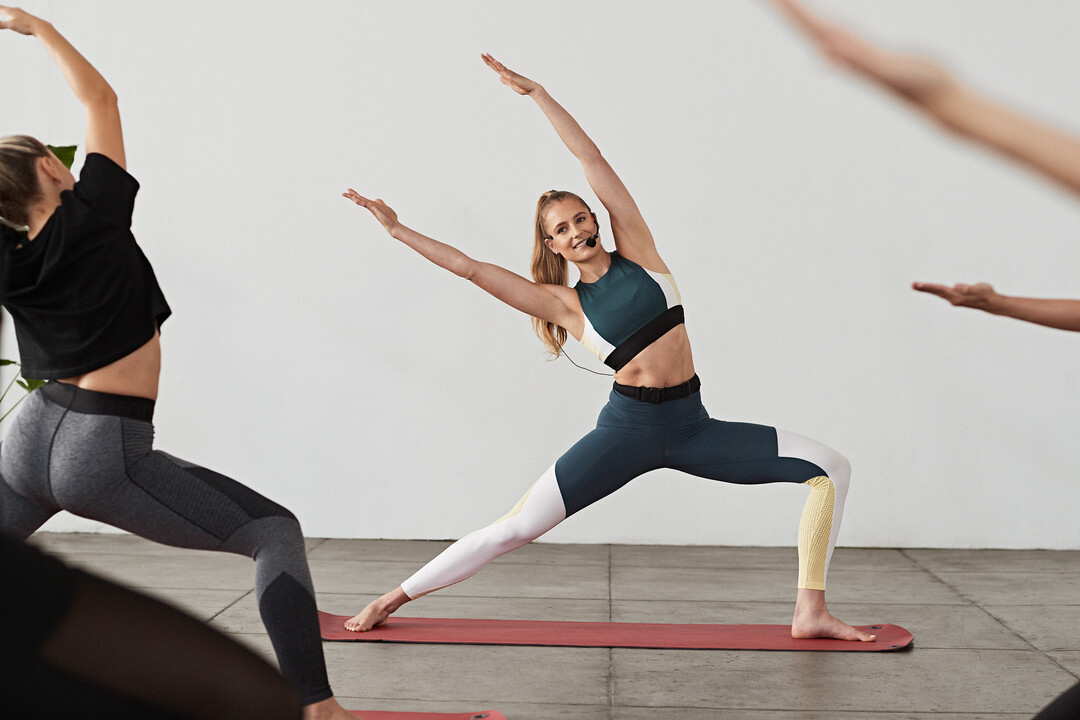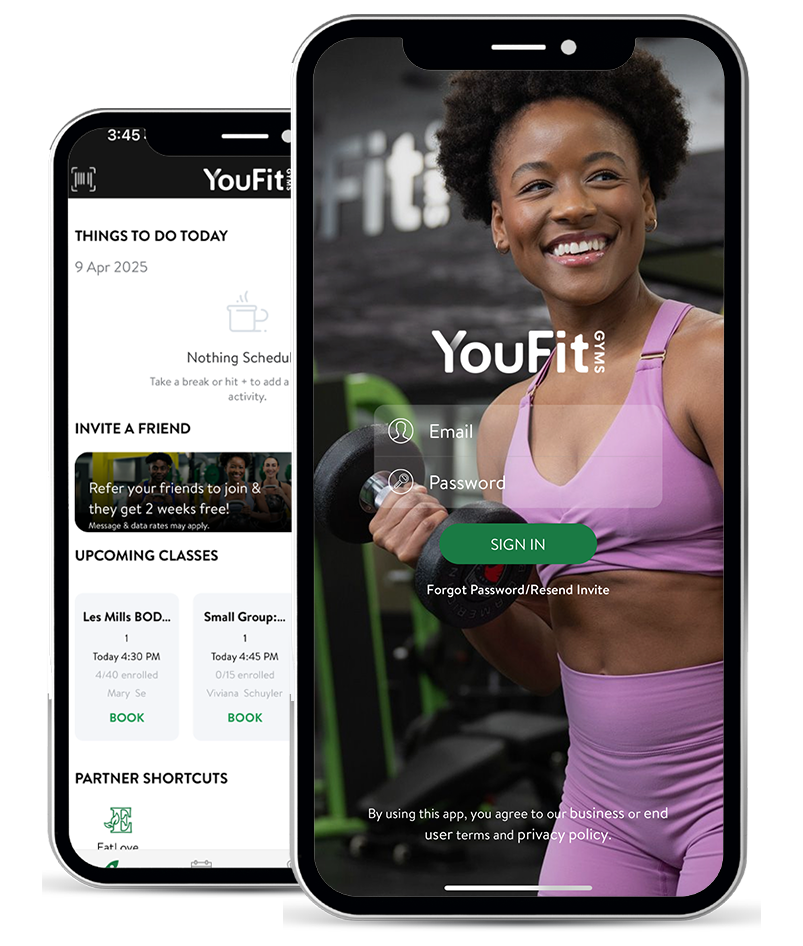With summer break over, fueling up with nutrient-dense foods that support muscle growth and repair should be priority No. 1 this fall–especially with the holiday season right around the corner. This time of the year is ideal for loading up on produce that’s harvested and sold from local farms. And while pumpkins and apples are certainly two of the most popular, there are several other healthy fall foods that can help you achieve your fitness goals.
Let’s take a look at 10 different options, with both savory and sweet taste buds in mind.
Winter squash
Typically harvested in late summer to early winter, squash come in a wide range of shapes, sizes and colors. A diverse fruit that can be enjoyed entirely on its own or as a vessel for a protein- and spice-packed stuffing, it’s the perfect fall-inspired food with which you can flex your culinary muscles.
Available in more than a dozen varieties, winter squash packs quite a nutritional punch. In addition to being an excellent source of vitamin A, squash also provides valuable fiber and micronutrients that’ll keep your digestive and immune systems healthy and happy, too.
Pumpkin
You can’t talk about fall foods without shining the spotlight on arguably the biggest star of this time of the year: pumpkin. And while there’s nothing wrong with enjoying a #pumpkinspice latte or pumpkin-inspired dessert, there’s a lot more you can do to highlight the health benefits of this brightly-colored, flavorful fruit.
When the temperature drops and you want to warm up with something savory, use a roasted pumpkin as the base for a creamy, hearty soup. Or, blend it up with your favorite protein powder and a few other simple ingredients to make a nutritious pancake batter. You can even sprinkle toasted pumpkin seeds on top of a smoothie or yogurt bowl for added crunch.
Apples
While mom’s signature apple pie recipe may not fall under the healthy fall foods category, apples themselves certainly do. At around 100 calories, a medium-sized apple won’t take a huge bite out of your caloric budget for the day. However, it will provide about 25 grams of carbohydrates—the perfect amount for a pre-workout snack.
Of course, you can take things to the next level by utilizing this fall-time fruit in delectable desserts. Just remember that achieving your fitness goals won’t be as easy if you go overboard on sugar and processed carbohydrates.
Cranberries
The North American cranberry season runs from mid-September to mid-November. In other words: the time is NOW to enjoy these bright, slightly tart bundles of antioxidant-containing goodness. You can quickly transform an ordinary salad into something far more delicious by tossing in some cranberries. Ditto for your morning oatmeal. And when Thanksgiving rolls around, you best believe the table will include some homemade cranberry sauce that contains far less sugar than the store bought version.
Leeks
An underrated vegetable that doesn’t get nearly enough love, leeks come from the same family as onions, chives and garlic. However, they have a more mild, slightly sweeter flavor–along with several key health benefits.
A low-calorie, nutrient-dense ingredient, leeks are high in magnesium and vitamins A, C and K. They’re also rich in antioxidants and contain compounds that support reduced inflammation. Served as a side dish or in a soup, leeks can be cooked in a number of different ways. It’s up to you to get creative!
Sweet potatoes
A healthy fall food you should eat all year round, sweet potatoes are a staple item on my personal grocery list. If you’re in a time crunch, you can throw one in the microwave and have a clean carbohydrate source ready to consume in less than 10 minutes. If you’re not in a hurry, slice up a sweet potato, turn on your air fryer or oven and make homemade sweet potato fries without all that oil.
No matter how you serve them, sweet potatoes are a nutritional powerhouse that provide fiber, potassium, vitamin C and antioxidants like beta carotene. That’s exactly why they’re one of the most popular carb sources for gym goers, bodybuilders and other performance-oriented individuals who want to get the most out of their workouts.
Brussels Sprouts
High in vitamin K and fiber, Brussels Sprouts most certainly meet the healthy fall food criteria. Part of the cruciferous family, they have a sweet, nutty flavor when prepared properly.
Be warned, though, overcooked Brussels Sprouts have a distinctly strong smell and mushy texture that aren’t exactly appetizing. Keep things simple by tossing them in olive oil and some seasonings and roasting them in the oven until lightly browned.
Pears
Another fall-time fruit that deserves attention, pears support a healthy gut by delivering plenty of fiber and other beneficial compounds. And at around 100 calories (primarily all from carbohydrates), a medium pear is a low-calorie snack that can give you a boost of energy to fuel your gym session.
Pecans
You can reap the nutritional rewards of pecans without necessarily reaching for a sugar-laden dessert. With anti-inflammatory properties and high levels of magnesium, calcium and vitamin E, this tiny tree nut is at the top of its class in terms of flavonoids.
If you are going to indulge in a pecan-based treat, just be mindful of how much you’re eating. After all, one slice of pie won’t completely throw you off track. Life is about balance and celebrating special moments with your loved ones.
Cauliflower
One of the most versatile veggies around, cauliflower is a healthy fall food that can be prepared at any time in any number of ways. Roasted, steamed or used as the base of a mash or puree, cabbage’s inconspicuous cousin contains high levels of vitamins C and K and folate–with little calories.
If you’re focused on trimming a few inches off your waistline, cauliflower is a great low-carb alternative to potatoes or rice. Just make sure you raise the bar with your seasoning game to bring this rather bland piece of produce to life!
By Stephen Sheehan
ISSA Certified Personal Trainer, Nutritionist and Fitness Coach











